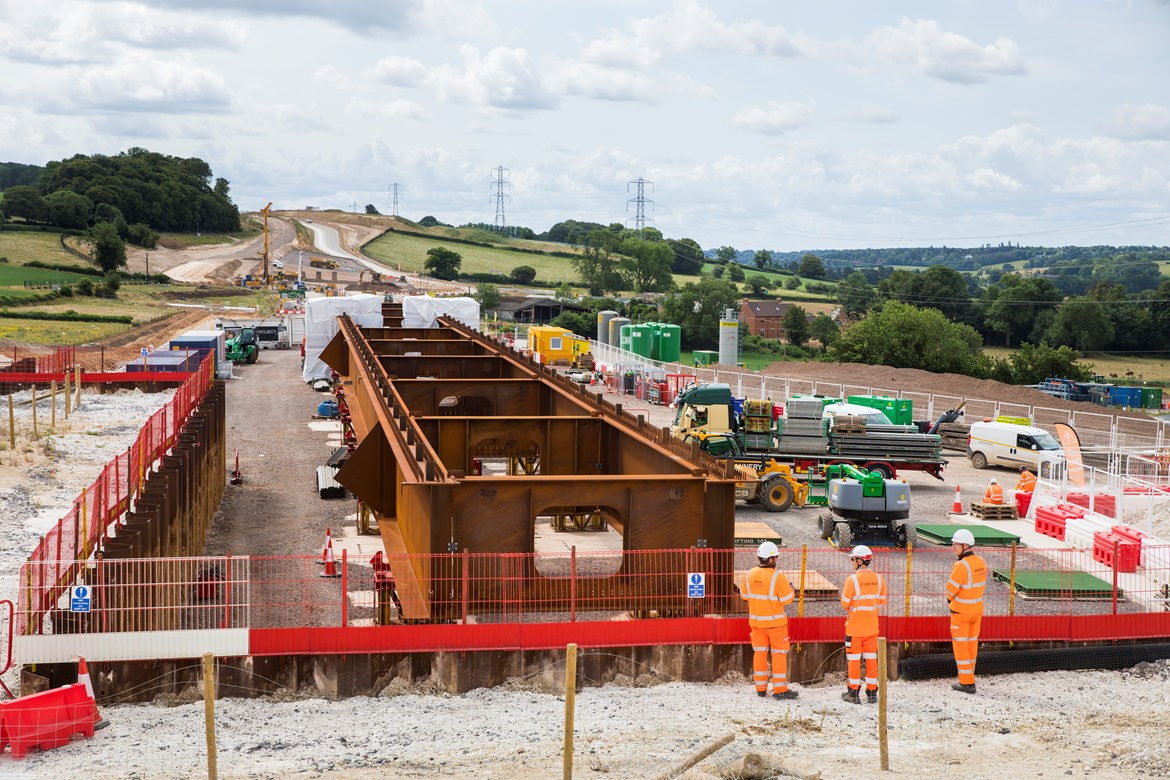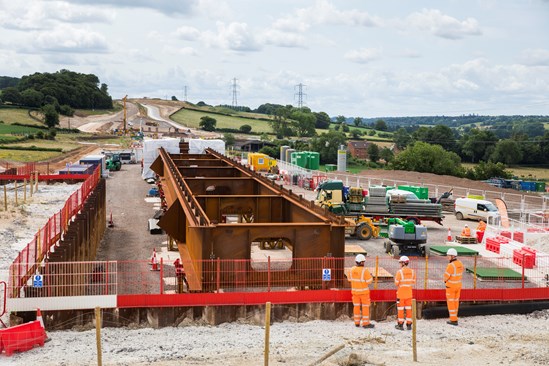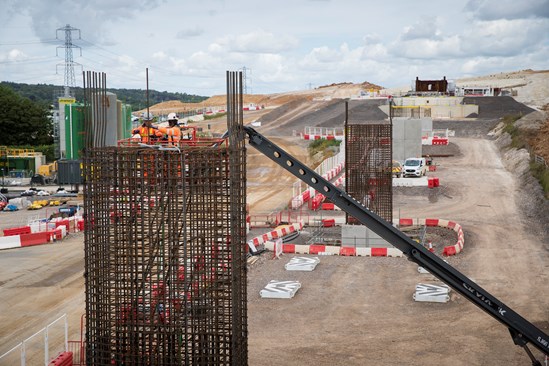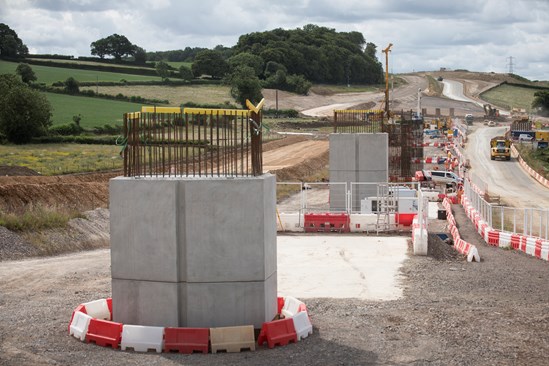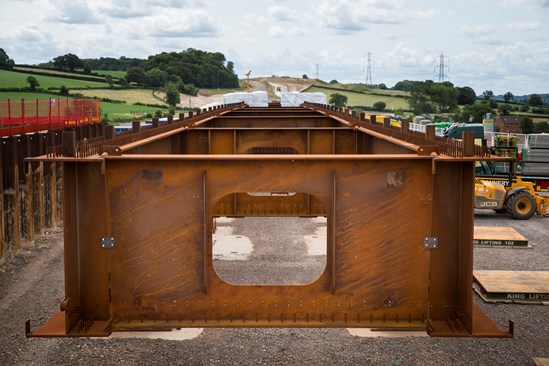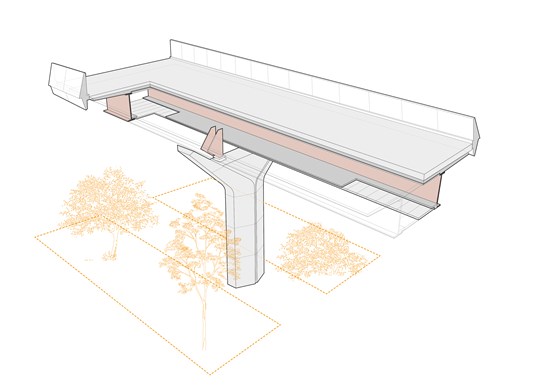The first of 38 steel beams that will form the innovative low-carbon structure of HS2’s Wendover Dean Viaduct have completed their 560-mile journey to site ahead of the start of deck construction.
Travelling at night to reduce disruption for the local community, the 25m long steel beams were transported on the back of extra-long lorries, with traffic management in place to stop traffic as they negotiated corners and narrow sections of road.
Manufactured by Eiffage Metal at a specialist facility in France, each of the 40 tonne beams is made of ‘weathering steel’ which naturally fades to a dark brown colour over time. This type of steel was chosen to help match the natural tone of the surrounding countryside.
Located south of the village of Wendover in Buckinghamshire, the 450m-long viaduct will be the first major railway bridge in the UK to be built with a ‘double composite’ structure, using significantly less carbon-intensive concrete and steel in comparison to a more traditional design.
Over the summer, HS2 Ltd’s main works contractor, EKFB - a team made up of Eiffage, Kier, Ferrovial Construction and BAM Nuttall – will assemble the beams into the first of five 90m long spans, ready to be pushed out onto the viaduct piers later this year.
HS2 Ltd Project Client Neil Winterburn said:
“It’s great to see the first beams arrive on site. These huge pieces of steel will play a vital role in the innovative double composite structure of the viaduct deck – and help us cut the amount of embedded carbon in the structure.
“As well as offering zero-carbon rail travel from day one, it’s also important that we reduce the amount of carbon-intensive steel and concrete we use in construction. That’s why this viaduct, and this structural design, is so important.”
EKFB worked with their design partner, ASC (a joint venture between Arcadis, Setec and COWI) and specialist architects Moxon on the ‘double composite’ approach which was inspired by structures on the French high speed TGV network. As well as manufacturing the steel, Eiffage Metal will also lead on the installation of the beams.
Instead of using solid pre-stressed concrete beams to form the bridge spans, the viaduct will use two steel beams sandwiched between two layers of reinforced concrete to create a lightweight and super strong hollow span.
The huge spans will be assembled on site, with pre-cast concrete sections added to form the box-like structure. These will then be slowly pushed out from the north abutment onto each of the concrete piers later this year.
EKFB’s senior engineer James Collings welcomed the beams to site, saying:
“There's been a tremendous amount of effort put in to get to this stage of construction, including an extensive earthworks and utilities programme and beam delivery is a key milestone for the team.
“As momentum gathers pace and we continue our preparations for the bridge deck launch, it’s great to see these steels on site, ready for the next phase of build. We’re starting to see the viaduct emerge from its foundations and start to take shape above ground.”
Construction has also begun on the enormous piers – some up to 14 metres high – that will support the deck of the viaduct. These are made up of a series of hollow pre-cast concrete shells which are placed on top of each other and filled with concrete and steel reinforcing. This approach was chosen to enable a crisp, clean external finish to the concrete, cut the amount of work on site and reduce disruption for local residents.
Once complete, HS2 will link London, Birmingham and the North – dramatically improving journeys while freeing up space for more freight and local services on the existing network. Trains will be powered by zero-carbon electricity from day one and carry up to 1,100 passengers.
The double composite approach is set to save an estimated 7,433 tonnes of embodied carbon within materials – the equivalent of someone taking 20,500 return flights from London to Edinburgh – and help HS2 achieve its goal of halving the amount of embedded carbon in construction.
